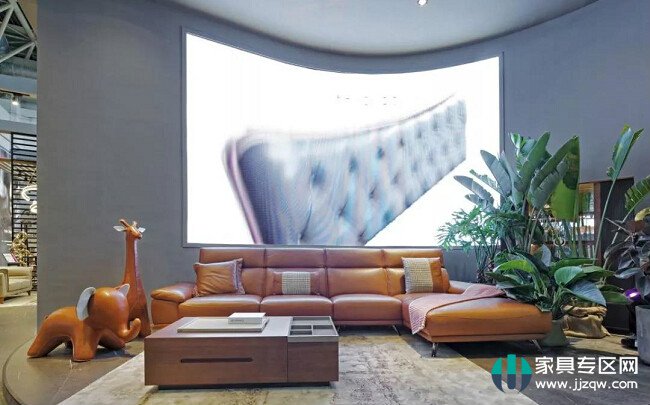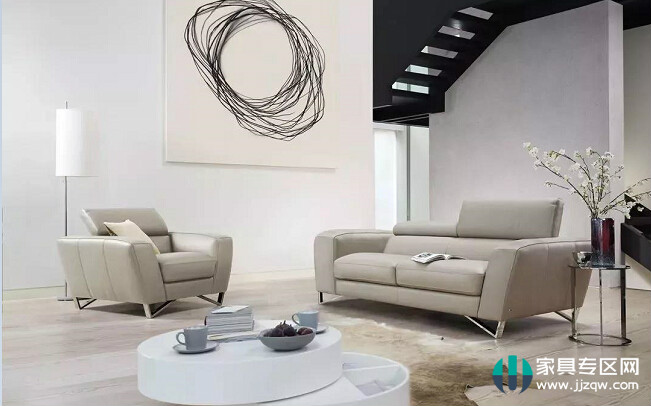
Leather is a very common material. In addition to shoes and bags, many furniture is also made of leather, such as sofas, beds, etc. that we use every day. How are the leathers with such high appearances produced?
A piece of cowhide has to go through 20 processes to stop the use of a good sofa.
1. Infiltration: Soak the leather in the drum and regain the moisture lost during the initial salinization.
2, liming: the first step to remove the fur, leather "naked".
3, scraping grease: mechanical steps to remove residual fat under the skin, to prevent chemical reactions in the later leather, acid odor and so on.
4, split skin: the skin is divided into two or more layers. The upper layer can become a "full grain" leather.
5. Pickling: The chemical step of removing lime and opening the "grain" pores.
6. Tanning: Stop the cortical organic decomposition process to obtain chemical and biological stability.
7. Screening: Pick the best leather.
8. Shaving: The thickness of the skin layer is determined by the steps in a roller machine equipped with spiral blades.
9, reclamation: determine the final appearance of leather: feel, texture, thick, grainy.
10. Dyeing: Dyeing with dye and evenly spreading over the entire thickness.
11. Filling: Lubricate the skin layer for better elasticity, softness and pull resistance.
12. Drying: Eliminate humidity: Spread the cortex on the preheating plate.
13, air drying: air drying in a natural way, to create the softness of leather.
14. Pull soft and wet: soften and moisturize the fiber, further softening the feel of the leather.
15. Fleece: softens, moisturizes and enhances the "feel" of leather.
16, hand-polished: to improve the elegant light characteristics, called "thousands" in the terminology of suede.
17. Trim: Discard the parts that cannot be used.
18. Finishing: Determine the ability of the leather to resist abrasion, resistance to discoloration and stain resistance.
19. Ironing and embossing: Both procedures are designed to make the “grain†of Pelle Frau® leather more uniform.
20. Measurement: The cortex is measured electronically to determine the size.
Good leather plus good craftsmanship can make a piece of cowhide to make a material suitable for processing into a good sofa. The craftsmanship seems simple, but the lack of one of them can affect the performance of the final cortex. Doing every step of the heart is the ultimate guarantee of the quality of the product.

Type of sofa leather:
First, the leather:
The leather is the raw leather peeled off from cattle, sheep, pigs, horses, deer or some other animals. After being processed by the leather factory, it is made into leather materials with various characteristics, strength, feel, color and pattern. It is a modern leather product. Essential materials. Among them, cowhide, sheepskin and pigskin are the three major types of leather used in tanning. The dermis is divided into two types: the top layer skin and the second layer skin.
1. The first layer of skin: the top layer of skin is directly processed from the raw skin of various animals, or the hairs of cattle, pigs, horses, etc., which are thicker in the skin layer, are cut into two layers, and the upper part of the fiber structure is tight. It is processed into various top layers.
2. Two-layer skin: The second layer skin is a loose layer of fibrous structure. It is processed by chemical spraying or coating with PVC and PU film.
Second, leather processed leather
1. Laser skin: also called laser skin, which uses laser technology to etch the latest leather varieties of various patterns on the leather surface.
2, printing or stencil: the same material as the embossed skin, but the processing technology is different, is printed or burned into a variety of patterns or patterns of the first layer or two layers of skin.
3, water-stained leather: refers to the use of cattle, sheep, pigs, horses, deer and other top layer leather bleaching and dyeing of various colors, the drums are loose, and the various soft skins processed by glazing.
4, open edge bead skin: also known as foil leather, is tossed in two along the spine, and repaired the loose wrinkles and the top layer of the limbs or the two layers of open-edge cowhide, on the surface of the fit It is made of various PVC, metallic, fluorescent pearl, illusion, or multi-color PVC film.
5, shaved skin: is a poor first layer of skin billet, the surface is polished, grinding off the surface of the scars and blood scars, sprayed with a variety of popular color leather, pressed into a grainy or glossy effect of the skin.
6, patent leather: the use of two-layer leather blank spray various chemical raw materials, after calendering or matting processing of leather.
7, embossed leather: generally use shaved skin or open edge beads to suppress a variety of patterns or patterns. For example, crocodile pattern, lizard pattern, ostrich skin pattern, python skin pattern, water ripples, beautiful bark pattern, lychee pattern, imitation deer pattern, etc., as well as various stripes, grids, three-dimensional patterns or reflect various brands. Image of creative patterns, etc.
8. Matte leather: The leather surface is polished, and the grain scar or rough fiber is abraded to expose the neatly smooth leather fiber structure and then dyed into various popular colors.
9, suede: also known as suede, is the surface of the skin is polished into a velvet, and then dyed a variety of popular colors of the first layer of skin.
Third, the regenerated skin
After pulverizing various animal skins and leather scraps, the chemical raw materials are processed and processed. The surface processing technology is the same as that of the leather, the embossed skin, which is characterized by the neat edge of the skin, high utilization rate and low price; but the skin is generally thick and the strength is poor, and it is only suitable for making the cheap briefcase and the trolley bag. , the club sleeve and other shaping products and flat price belts, the longitudinal section of the fiber structure is uniform, can recognize the solidification effect of the fluid mixed fiber.
Fourth, other
1. Artificial leather
Also known as imitation leather or rubber, it is a general term for artificial materials such as PVC and PU. It is made of PVC or PU foaming or laminating on various fabrics or non-woven fabrics. It can be made according to different strength, wear resistance, cold resistance and color, luster and pattern. The pattern and the like are required to be processed, and have the characteristics of various colors, good waterproof performance, neat edge width, high utilization rate and low price relative to leather. However, most of the artificial leather cannot have the effect of leather on the hand and elasticity;
The longitudinal section shows fine pores, a film or surface film and dry, rayon. It is a class of materials that have been extremely popular since the early days and is commonly used to make a variety of leather products, or parts of leather materials.
The increasingly advanced production process is being widely used in the processing of two-layer leather. Nowadays, artificial leather, which is very similar to leather, is produced on the market. Its surface technology is extremely fibrous. It has almost the effect of leather. Its price is comparable to that of domestic top layer.
2, microfiber skin
The full name of the ultra-fine leather is "microfiber reinforced PU leather". He has excellent wear resistance, excellent cold resistance, breathability and aging resistance, and is the best artificial leather.
Made from the virgin fiber of the dermis, it has excellent tensile and abrasion resistance, excellent cold resistance, breathability and aging resistance. In a sense, it can also be regarded as leather. If it is natural, it will not be surrounded. And the price is expensive, now the ultra-fibre or microfiber products have replaced the use of leather, and more expensive, more durable, almost no defects.
Joystar Electrical Appliances Manufacturing Co.,Ltd , https://www.cnjoystar.com
